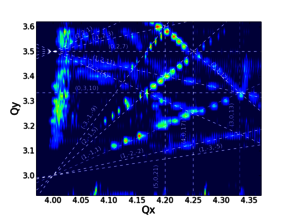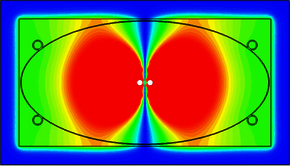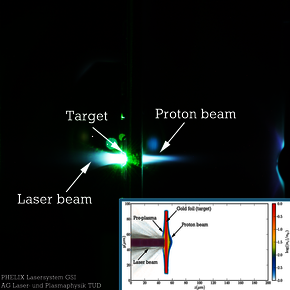



Department Accelerator physics
Physics of high intensity ion beams
The GSI accelerator physics department contributes to the optimization of the GSI and FAIR machines. The key aspect of the work is in computer modeling and simulations which are validated by measurements on heavy ion beams.
High intensity ion beams
The focus of the department are on the hitherto existing GSI accelerator facility as well as on the FAIR project under construction. Furthermore there is close collaboration with CERN and the Brookhaven National Lab (BNL) in the USA.
Development and benchmarking of computer models for ion beams
The members of the department contribute significantly to the understanding of the dynamics of intense ion beams by development and evaluation of computer simulations. Since models can only resolve fractions of the various collective interactions, benchmarking by dedicated experiments is crucial. These measurements are mostly performed at GSI and CERN.
Collective effects in ion beams
Important performance parameters of modern accelerators are the intensity and quality of the delivered beam. Both are limited by collective effects which arise mostly from electromagnetic interaction of particles with each other (space charge), with their surrounding environment (coupling impedances), and secondary particles (electron clouds).
Coupling impedance
The resistive wall impedance is one of the main sources for beam instabilities in synchrotrons and storage rings. The real part of the dipolar transverse coupling impedance can act as the driving term for transverse beam instabilities. For the SIS18 as well as for the projected SIS100 the resistive part of the transverse coupling impedance is dominated by the beam pipe at low frequencies.
In order to reduce eddy current effects during the magnet ramp, the SIS100 beam pipe will be very thin. Due to mechanical and vacuum reasons the SIS100 beam pipe will be built with stabilizing ribs and cooling tubes.
For such a complex structure the coupling impedance cannot be obtained analytically. Numerical 3D electromagnetic simulations in frequency domain can be done with tools like CST EM Studio.
New collective acceleration mechanisms
Another focus of the department’s work is on simulations of experiments with the high power laser PHELIX. In the so called Target Normal Sheath Acceleration (TNSA) process the laser hits a thin foil which is immediately ionized. The light electrons leave the material much faster than the heavy ions such that a strong space charge field is generated. A thin impurity layer on the foil that consists amongst others of protons is then accelerated in the electrons’ space charge field. The acceleration takes place on µm scales behind the target. The fitting of this beam in a conventional periodic focusing channel (m scale) is a multi-scale problem which can only be addressed by several distinct computer simulations performed on the different space and time scales.





